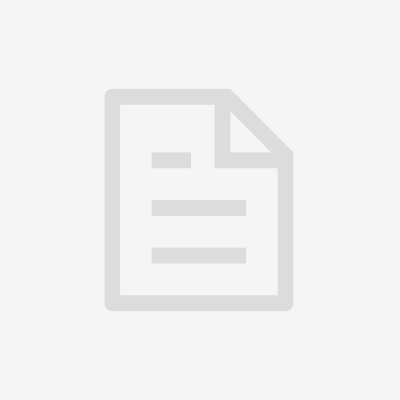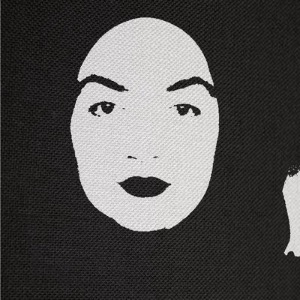Jan 10, 2023
Keller's Band Counting Method with Chloroquine
- 1HHU biology student / iGEM Duesseldorf 2018;
- 2Heinrich-Heine Universität Düsseldorf

External link: https://doi.org/10.1093/nar/gkac1132
Protocol Citation: Salima Rüdiger, Rainer Machne 2023. Keller's Band Counting Method with Chloroquine. protocols.io https://dx.doi.org/10.17504/protocols.io.rbcd2iw
Manuscript citation:
Behle A, Dietsch M, Goldschmidt L, Murugathas W, Berwanger L, Burmester J, Yao L, Brandt D, Busche T, Kalinowski J, Hudson E, Ebenhöh O, Axmann I, Machné R, Manipulation of topoisomerase expression inhibits cell division but not growth and reveals a distinctive promoter structure in . Nucleic Acids Research 50(22). doi: 10.1093/nar/gkac1132
License: This is an open access protocol distributed under the terms of the Creative Commons Attribution License, which permits unrestricted use, distribution, and reproduction in any medium, provided the original author and source are credited
Protocol status: Working
Created: June 26, 2018
Last Modified: January 10, 2023
Protocol Integer ID: 13380
Funders Acknowledgements:
Abstract
Supercoiling plays a major role in the regulation of bacterial growth, especially in the circadian rhythm of cyanobacteria. The Keller's Band Counting Method was modified with the use of intercalating substance chloroquine (CQ), instead of using ethidium bromide (EthBr). The principle of that method is to conserve supercoils through intercalation and unwinding of not intercalated supercoils through Topoisomerase I. Using different concentrations of the intercalating substance cause different levels of supercoiling. The treated samples were applied on agarose gels containing different concentrations of intercalation substance as well. This method allows counting all topoisomers from native, to completely relaxed state. So, the full extent of supercoiling is defined exactly. The modified method can be adapted easily, to establish correct conditions to monitor the in vivo supercoiling of other, biotechnologically relevant plasmids (expression vectors of reporter genes or heterologous expression).
Isolation of plasmid
Isolation of plasmid
The examined plasmid has to be isolated properly.
For a bigger topoisomer series, it is recommended to isolate a higher amount of bacterial culture.
I use ZymoPURE™ Plasmid Maxiprep Kit, according to their Vacuum protocol.
Purification with T5 Exonuclease (optional)
Purification with T5 Exonuclease (optional)
The isolated plasmid sample is divided into 1 µg aliquots to perform the T5 Exonuclease reaction. The concentration was measured with Nanodrop.
Each reaction contained:
- 1 µg DNA
- 5 µl NEBuffer 4
- 1 µl T5 Exonuclease
- fill up to 50 µl with Nuclease-free water
Incubate at 37 °C for 30 minutes.
This protocol is based on the protocol of NEB.
PCR clean-up/purification (optional)
PCR clean-up/purification (optional)
To purify plasmid samples from the T5 Exonuclease a PCR purification should be deployed. Summing up samples in one column helps to get higher concentration in single samples. It is important to not press the threshold of 10 µg per column to not lose any DNA.
For this step, I use the NucleoSpin® Gel and PCR Clean-up kit from Machery-Nagel according to their PCR clean-up protocol.
Plasmid treatment for "Keller’s Band Counting Method"
Plasmid treatment for "Keller’s Band Counting Method"
At first, the plasmids get in contact with different concentrations of chloroquine:
- 1 µg pDNA
- 2.5 µl Cutsmart
- chloroquine 0-3 mg/ml (calibrated for pUC19)*
- fill up to 24 µl with Nuclease-free water
Incubate at 37 °C for 15 min
After that, add 1 µl of Topoisomerase I in each reaction.
Incubate it again at 37 °C for 15 min.
Then stop the reaction at 65 °C for 20 min.
*It is easier to prepare a chloroquine dilution series, where you just put e.g. 5 µl of the mixture to get your desired concentration in your reaction
PCR clean-up/purification
PCR clean-up/purification
To purify plasmid samples from the chloroquine and Topoisomerase I, a PCR purification should be deployed. That also helps to reconcentrate the samples with summing similar treated samples into one column (see 3).
For this, I use again the NucleoSpin® Gel and PCR Clean-up kit from Machery-Nagel according to their PCR clean-up protocol.
Chloroquine agarose gel electrophoresis (pUC19)
Chloroquine agarose gel electrophoresis (pUC19)
This section is calibrated for pUC19 and the
Peqlab chamber 40-1515:
At first, a 1.2% agarose gel is needed:
- 225 ml 0.5x TBE buffer
- 2.7 g agarose
Boil the mixture in the microwave and when it is warm to the touch add chloroquine (end concentration 0 - 8 µg/ml) in it.
Then the fluid gel is ready to be poured in the prepared gel trail. I use the Peqlab 40-1515 chamber.
Prepare 1 L of 0.5 TBE buffer with the same Chloroquine concentration as the gel.
When the gel is solid, put the trail into the chamber and 1 pour the prepared TBE buffer in it.
A detailed chloroquine agarose gel electrophoresis protocol is linked down below:
Protocol

NAME
Chloroquine agarose gel
CREATED BY
Salima Rüdiger
A 1.2% agarose gel consists of:
- 2.7 g agarose
- 225 ml 0.5x TBE
Mix both together in an open 500 ml bottle and boil it up in a microwave. The agarose should be dissolved and the hot solution completely clear.
Mix the solution with putting it on a magnetic stirrer with a stir bar. The solution will cool down faster and is mixed with less incurrence of air bubbles. Wait until the solution is warm to the touch and take care that the solution keeps liquid and clear.
When the solution is warm to the touch, add the needed amount of chloroquine* and let it stir a bit.
*Stock solution: 10 mg/ml chloroquine
- 1 µg/ml in 225 ml solution --> 22.5 µl
- 8 µg/ml in 225 ml solution --> 180 µl
- 10 µg/ml in 225 ml solution --> 225 µl
- 15 µg/ml in 225 ml solution --> 337.5 µl
Based on experience, 8 µg/ml always brought good separation of topoisomers.
Pour the mixture into a gel chamber with fitting gel carrier. We are using the Peqlab chamber 40-1515.
Occurring air bubbles can be eliminated or pushed to the gel edges with a pipette tip.
Put a proper comb in your liquid gel before it hardens.
Prepare 1 L of 0.5 x TBE buffer with the same chloroquine concentration as in the gel.
*Stock solution: 10 mg/ml chloroquine
- 1 µg/ml in 1 L TBE --> 100 µl
- 8 µg/ml in 1 L TBE --> 800 µl
- 10 µg/ml in 1 L TBE --> 1000 µl
- 15 µg/ml in 1 L TBE --> 1500 µl
When the gel hardens put out the comb and pour the prepared 0.5x TBE in the gel chamber until the gel, especially the gel slots, are completely covered.
Per Lane, 250 ng of pUC19 or 1 µg of Synechocystis sp. plasmid DNA is recommended.
To ballast our samples we use 6x Purple Loading Dye (Thermo Fischer).
The amount of Loading Dye in your sample should be 1/6 of your sample volume.
Pick a proper ladder. We are using GeneRulerTM 1 kb DNA Ladder from Thermo Scientific, which shows the best resolution if it is mixed 1:1:3 with Loading Dye and Millipore filtered water (one ladder lane: 1 µl ladder + 1 µl Loading Dye + 3 µl MilliQ).
Load your gel with your samples. Here it is the best to use only the first push of your pipette to avoid pipetting your samples out of the gel slots.
Close the gel chamber cover it from the light (chloroquine is light-sensitive) and make sure that the voltage source is plugged.
Running your gel should take place at 1.8 V/cm. With the chamber we are using, the run takes place at 40 V for 24 h.
It is always better to run the gel for longer and less voltage to seperate the topoisomers better.
After stopping the run, the gel is washed two times for 30 minutes in 250 ml 0.5x TBE buffer to remove the chloroquine. After that, the gel is stained with 25 μl Sybr Gold in 225 ml 0.5x TBE buffer for at least 1 h.
Use a matching imaging system for your application.
We are using ChemiDocTM MP Imaging System from BioRad to analyze our agarose gel.
Make sure to pick -->Nucleic Acid Gel' -->'Sybr Gold'' for our usage in the Image Lab software. Click "Position Gel" and place your gel according to what is best for your application. Then click "Run Protocol" and wait for your image.
